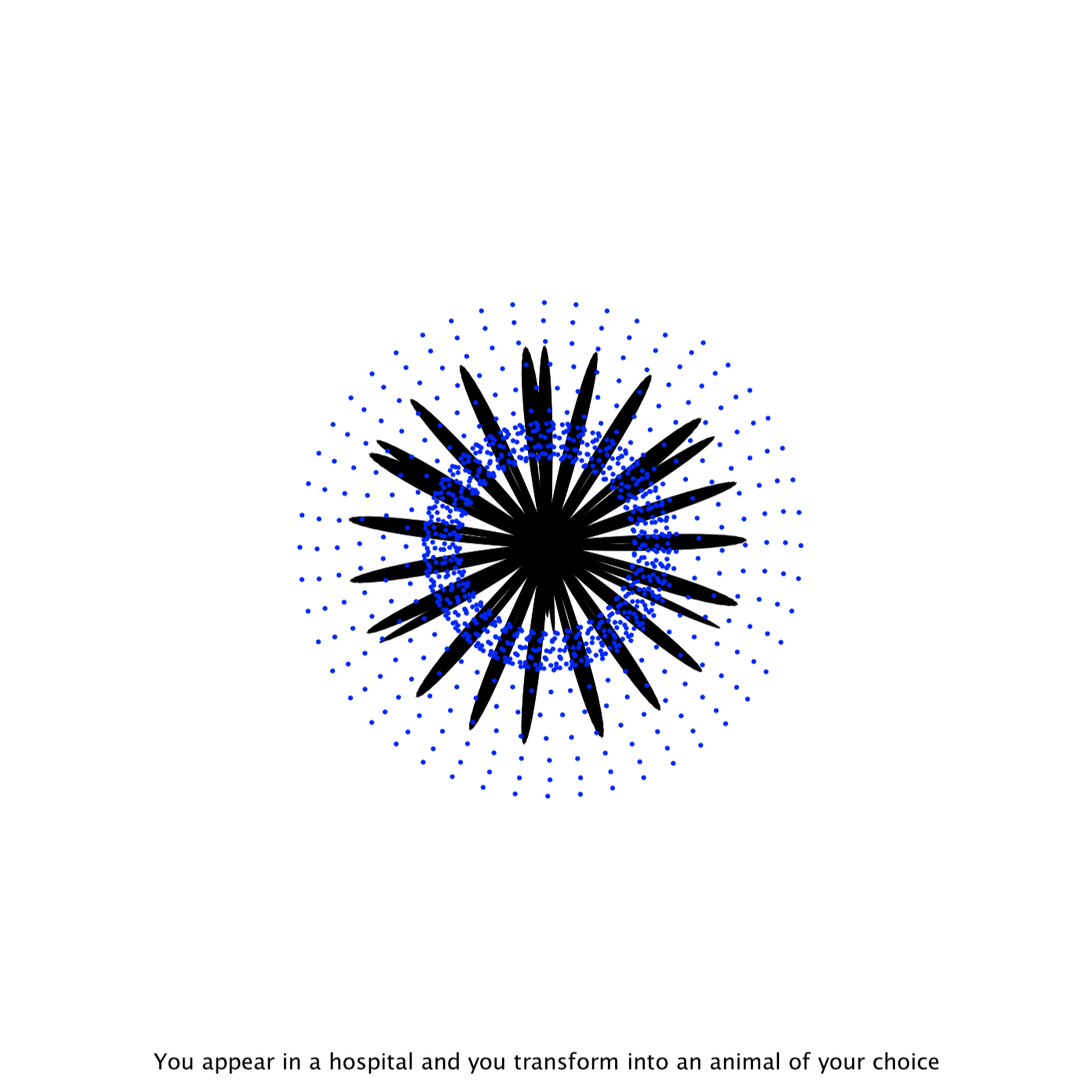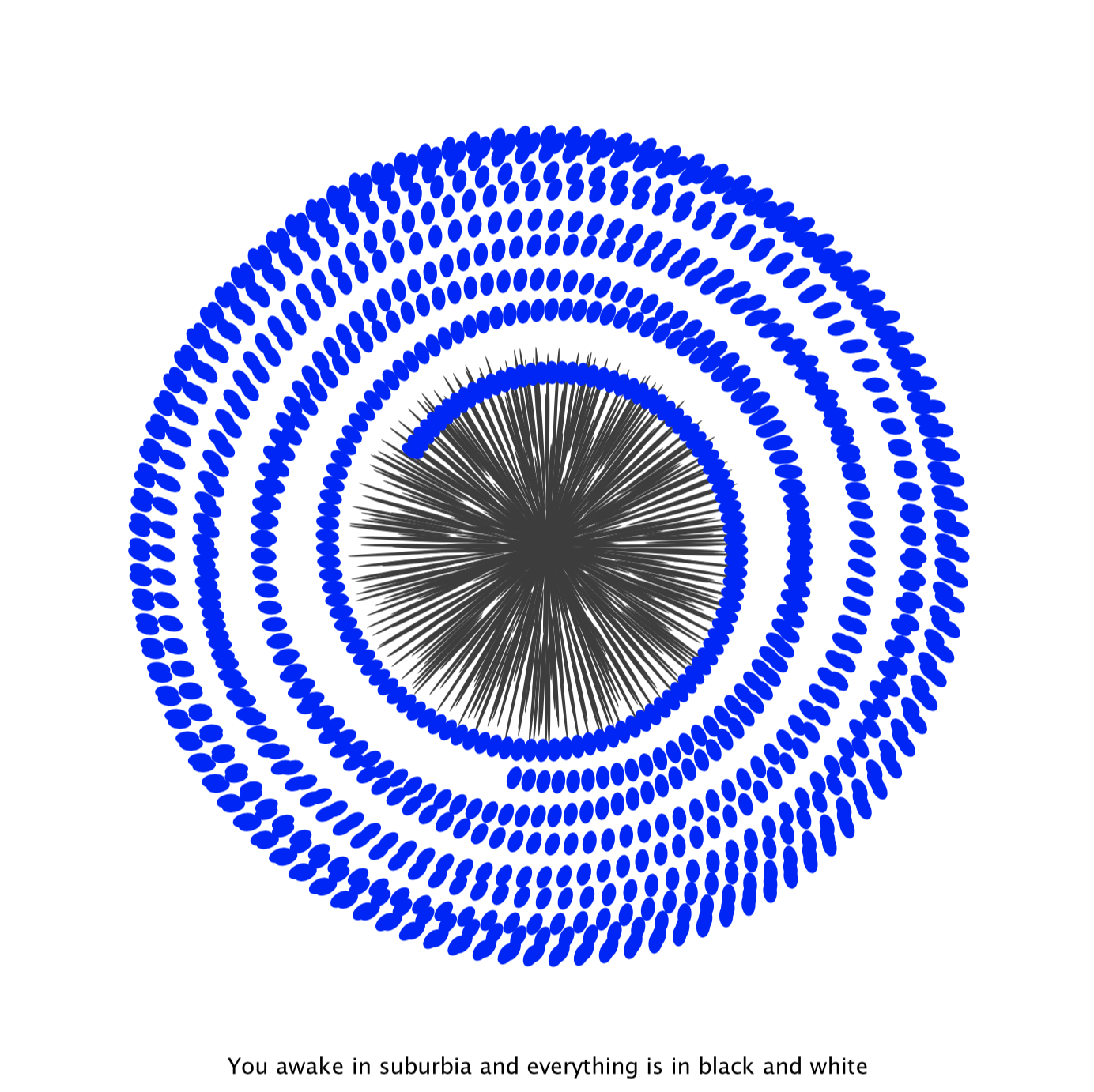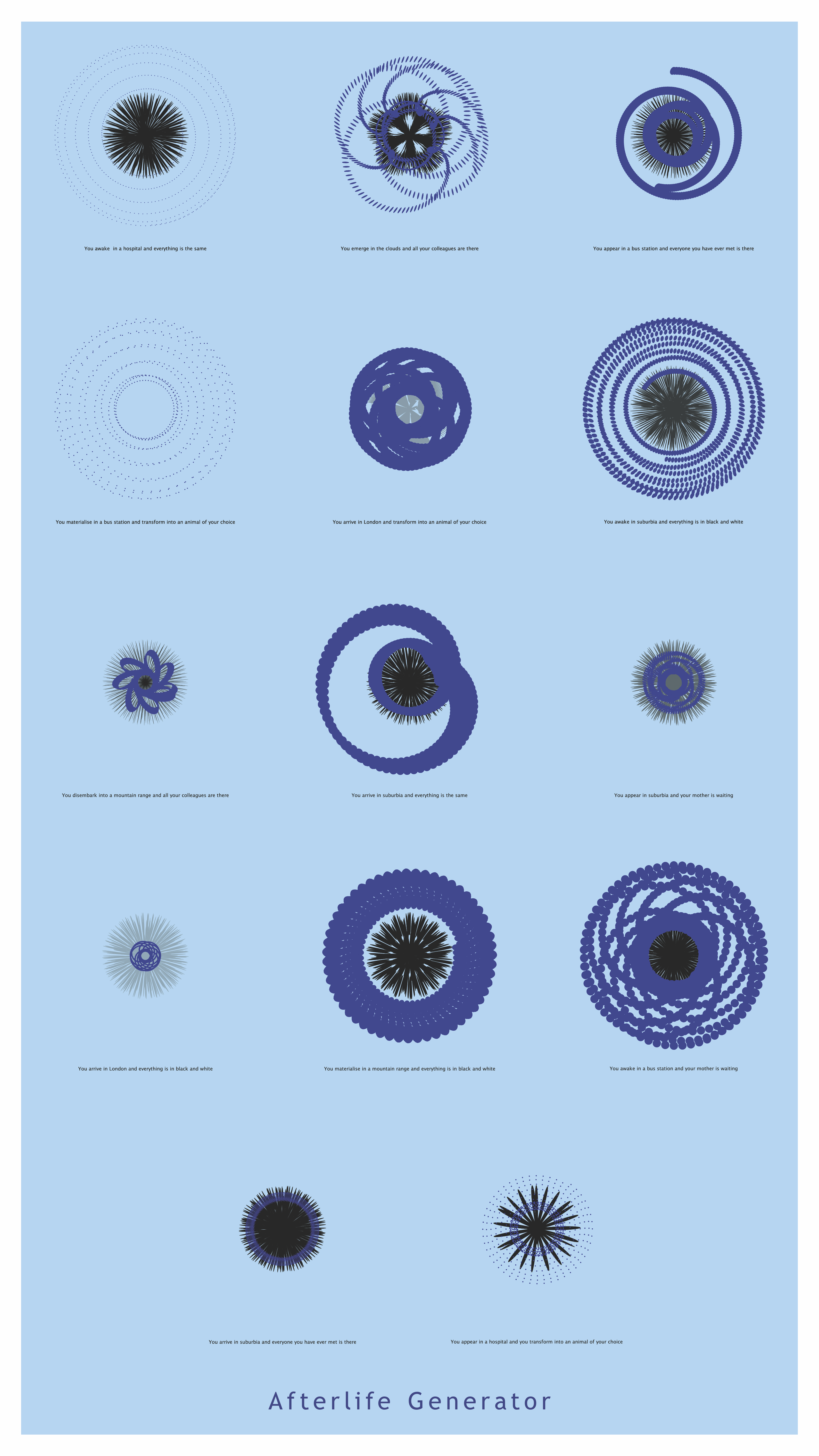after after
after after is an ‘afterlife generator’ inspired by David Eagleman's Sum
produced by: Christopher Merrington
‘There are three deaths. The first is when the body ceases to function. The second is when the body is consigned to the grave. The third is that moment, sometime in the future, when your name is spoken for the last time.’
-David Eagleman
Concept and Design
My dear friend Rachel Clancy recently created a game in which a soul decides on their next ‘human vacation’ via a series of questionnaires. I wanted to make something in response to this project and decided on an ‘afterlife generator’ in which a person is given an afterlife by manipulating an abstract shape.
After reading this recent survey I decided to narrow my theme down to ideas of another life where souls live on (e.g. heaven and hell) rather than the reincarnation aspect that Clancy dealt with. I was hopeful that going in this direction would result in a final piece that covered a similar topic to my original inspiration but provided a slightly different outlook. I also wanted to create a piece that encouraged viewers to think about their own mortality and what they would prefer from an afterlife.
While further researching the concept of afterlife I looked into how different cultures explore the idea of life after death. I knew I wanted to step away from traditional (mainly religious) ideas and explore more unorthodox ideas. This led me to David Eagleman.
Sum by Eagleman is a suite of variations on the possibilities of different kinds of afterlife. Each of the forty tales is 2-3 pages long, but each one is densely packed with mind-bending ‘what-if’s. He imagines wildly different ways that an afterlife, if it existed, could be structured. I wanted to lead with this idea but reduce it further, making an afterlife idea in a single sentence.
I decided to create visuals that resembled a tunnel/void to create a sense of transition. In Christianity the idea of ascending into light or being dragged into hell is a prevalent one when thinking about life after death. Although I didn't want to create heavens or hells I did like this aspect of a transition, and in choosing circular motifs I hoped to represent a liminal space. The choice of the colour blue was in direct response to Clancy's project, which is linked as a reference. We both have an appreciation of RGB blue and thanks to my use of the internet in the 90's, it's a colour I associate strongly with technology. I thought it a perfect choice for a digital project.
Technical Process
I used a methodical approach whilst working on this project. I was hoping to improve my coding ability, so I created a checklist of things I wanted to include in my sketch. This mainly included things covered in class such as arrays, sin, cos and for loops. My intention was to make sure I had a good understanding of these things before trying something new. The shapes were made using an array value and cos/sin, which are used in an equation to determine the X and Y values of the ellipses drawn by a for loop. I included controlP5 sliders to manipulate the shape in real time. The sliders controlled the size of the ellipse drawn, the colour of the shape and numbers that were included in the equation to determine the path the ellipse is drawn on.
I also used Processing to create the text under the images. On a technical level, I was able to refresh my knowledge using Learning Processing by Daniel Shiffman (a book that helped me many times throughout the course and when working on the final project). I knew that a string array would be the best way to create a sentence that would be unique each time the sketch ran. The first array is always filled with ‘You’, the second is filled with a verb (e.g. ‘awake in’ or ‘arrive in’), the third is a place (e.g. ‘a hospital’ or ‘London’) and the last array is filled with the end-states of the sentences (e.g. ‘and everything is the same’ or ‘and you are completely alone’). I then created a function that draws the random text from each of the arrays when the ‘t’ key is pressed. On the press of the same key the PDF finishes recording and is saved.
After saving several PDF’s I collected them in a grid formation in Photoshop and added a light blue background.


Self Assessment and Future Development
I am very happy with how the project looks. As a final printed product I think it is visually striking, and the end result is very similar to how I envisioned it when I started coding. I am also happy with the text. Some of the combinations didn't quite work together, but they were mostly thought-provoking, I hope – or at least fun.
I would like to develop the idea further by having a link between the text and the shape. At the moment the user manipulates the shape and then presses 't' when they are happy with the result. This leads to a random sentence being allocated to the shape, but no real link between them. Due to timing constraints I had to leave it as it is. I would like to change this so certain combinations of words are more likely depending on the size/shape of the visuals. I also found that the amount of words in the string array limited the piece somewhat. If I were to carry out this project again, I would increase the amount of words within the string array making a wider variety of sentences.

Night Palace - Joanne Kyger
The best thing about the past
is that it's over
when you die
you wake up
from the dream
that's your life
Then you grow up
and get to be post human
in a past that keeps happening
ahead of you
References
Special thanks to Shiffman, Lior, Eagleman, Clancy and Jamie Sichel for all being excellent humans.




































































